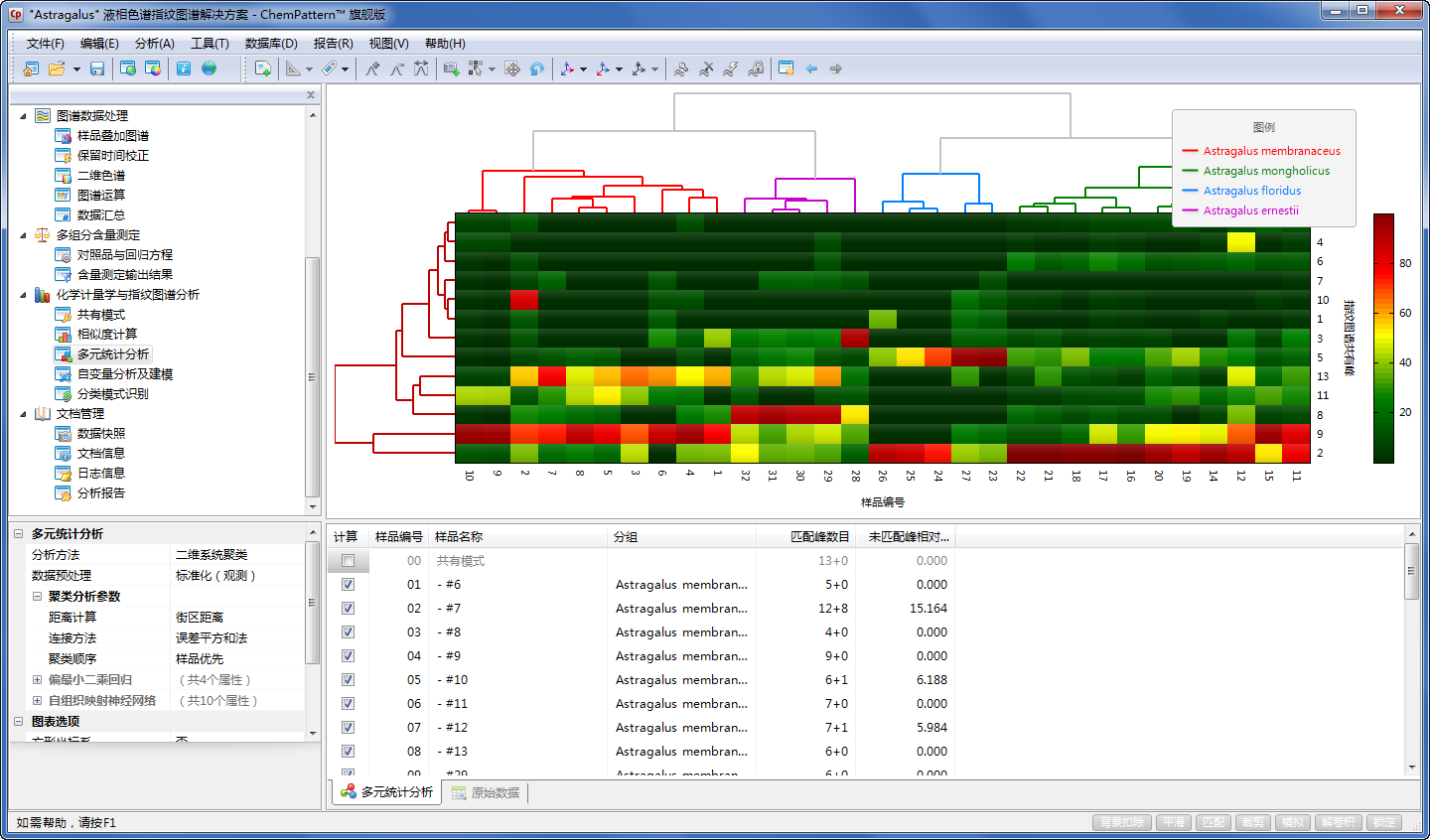


Chemometrics tries to build a bridge between the methods and their application in chemistry. There are techniques for collecting good data (optimization of experimental parameters, design of experiments, calibration, signal processing) and for getting information from these data (statistics, pattern recognition, modeling, structure-property-relationship estimations).
Chemometric analysis software#
Chemometric research spans a wide area of different methods which can be applied in chemistry. Sentence examples for processing and chemometric analysis of from inspiring English sources exact ( 1 ) For the data processing and chemometric analysis of the LC-MS data, the acquired raw data files (.d files) were processed with MassHunter Qualitative Analysis software (Agilent, version 5.0). Chemometrics is the science of relating measurements made on a chemical system or process to the state of the system via application of mathematical or statistical methods. In this study, a novel and effective strategy labeling retracing way based on HPLC fingerprint and chemometric analysis was proposed with Shenkang injection (SKI) serving as an example to achieve the quality control of the whole preparation process.


In this way, it mirrors several other interfacial ‘-metrics’ such as psychometrics and econometrics. It is a highly interfacial discipline, using methods frequently employed in core data-analytic disciplines such as multivariate statistics, applied mathematics, and computer science, in order to address problems in chemistry, biochemistry, medicine, biology and chemical engineering. Chemometrics is the science of extracting information from chemical systems by data-driven means.These VOCs were also correlated with the percent of Castanea sativa and Polygonum aviculare pollen grains. Considering the complementary results of PLS-VIP (partial least squares analysis-variable importance in projection) eucalyptol, 1-decanol, and tetradecanoic acid ethyl ester are proposed as volatile indicators of the provenance of Greek Quercus ilex honey. SLDA resulted in the formation of linear discriminant functions that provided a classification rate of honey samples according to provenance by ∼80%, based on styrene, eucalyptol, benzeneacetaldehyde, 1-decanol, and tetradecanoic acid ethyl ester. PCA explained 98.10% of total variance with the factors that maximized the squared cosine to be 10 VOCs: heptane, dimethyl-disulfide, octane, nonane, styrene, alpha-pinene, meta-cymene, dl-limonene, 1-decanol, and tetradecanoic acid ethyl ester. Principal component analysis (PCA), multivariate analysis of variance (MANOVA) and stepwise linear discriminant analysis (SLDA) showed that provenance affected the volatile composition of Quercus ilex honey. The present study aimed at the determination of volatile compounds (VOCs) of Greek Quercus ilex honey, which comprises a rarely studied honeydew honey, from different regions and to characterize its provenance using a targeted chemometric evaluation of the semi-quantitative data of VOCs determined with headspace solid phase microextraction coupled to gas chromatography/mass spectrometry (HS-SPME/GC-MS).


 0 kommentar(er)
0 kommentar(er)
